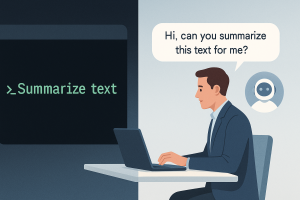
AI, Copyright, and Fair Use: The Reuters Case and Its Impact on Workplace AI
Introduction: Setting the Stage for AI and Copyright
As artificial intelligence (AI) continues to revolutionize industries, the legal landscape surrounding its development and use is evolving. One key area of concern is how AI systems—particularly large language models (LLMs)—are trained on vast datasets, which may include copyrighted material. The recent Reuters vs. Ross case has brought attention to the complex intersection of AI, copyright law, and fair use. This article explores the implications of this ruling and its potential impact on AI development and its use in the workplace.
The Reuters Case: A Legal Milestone for AI and Copyright
The Reuters vs. Ross Intelligence case centers around Ross, a legal research company, that used Reuters’ copyrighted content to train an AI-based platform for legal research. A federal judge in Delaware ruled that using this content without permission did not qualify as fair use. This decision is significant because it establishes a precedent for how AI companies must handle copyrighted materials in training datasets.
Key Legal Findings:
- Copyright Protection for Editorial Content: Even factual content, like news articles, can be protected under copyright law.
- Fair Use Ruling: The court ruled that using copyrighted content for AI training, especially for commercial purposes, is not covered under the fair use doctrine.
- Impact on AI Data Sourcing: This ruling could influence how AI companies source their data and encourage them to seek licensing agreements or use alternative datasets to avoid potential copyright violations.
Understanding Copyright and Fair Use in the Context of AI
Copyright Basics: Copyright is the legal right granted to the creator of original works of authorship, including written articles, artistic works, and even software. This protection allows creators to control how their work is used, ensuring they can profit from it.
Fair Use Doctrine: The fair use doctrine allows limited use of copyrighted material without permission under certain circumstances. It applies to uses that are non-commercial, educational, or transformative in nature. The four factors of fair use include:
- Purpose and character of the use (commercial or educational).
- The nature of the copyrighted work.
- The amount and substantiality of the portion used.
- The effect on the market value of the copyrighted work.
In the case of AI, the use of copyrighted materials to train models raises the question: Does this fall within fair use? The commercial use of content for AI training, especially when it competes with the original work, is highly debated and may not be considered fair use under current law.
AI and Copyright Concerns: Training Large Language Models (LLMs)
LLMs and other AI systems are trained on vast datasets, which may include public domain works, licensed content, and, in some cases, copyrighted material scraped from the web. The use of copyrighted material without explicit permission raises significant copyright concerns, especially if the content is used commercially by AI companies.
Potential Copyright Issues: If copyrighted material is used without permission, it could violate copyright law, similar to the Reuters case. AI companies may need to obtain licenses or consent from content creators to avoid these issues.
Impact on AI Development: The Reuters case highlights the importance of addressing copyright issues in AI training. It may lead to the creation of more restrictive guidelines on how AI models are built and what data can be used. AI companies could face challenges in sourcing data that doesn’t infringe on intellectual property rights.
The Impact of AI Copyright Issues on the Workplace
Virtual Agents and Assistants in the Workplace: As AI technology advances, businesses are increasingly integrating virtual assistants, chatbots, and AI-driven systems to streamline operations. These systems help automate tasks, assist with research, and even interact with customers.
Challenges for Workers: Workers in creative fields such as writing, marketing, and legal research may face challenges when their work is used to train AI models without compensation. AI systems trained on proprietary materials may undermine intellectual property rights, leading to concerns about unauthorized use of content.
Ethical AI Design: It’s crucial for AI developers to ensure that AI systems are designed ethically and that they respect the intellectual property rights of creators. Businesses using AI tools must consider these ethical and legal issues to avoid legal ramifications and ensure fair compensation for content creators.
Conclusion: A New Era for AI and Intellectual Property
The Reuters case is a pivotal moment in the ongoing conversation about AI, copyright, and fair use. As AI technology continues to evolve, understanding copyright law is essential for developers and businesses alike. Protecting intellectual property fosters creativity and innovation, but it must be balanced with the need to train AI models effectively. Moving forward, businesses and AI developers must integrate ethical guidelines into the design of AI systems to ensure that they respect intellectual property and comply with legal standards.
AI is reshaping the workplace, and understanding the implications of copyright and fair use will help professionals and developers navigate this new landscape. Stay informed and adapt to these changes to ensure a fair and responsible future for AI in the workplace.
Judge’s decision in the Thomson Reuters case is here: https://fingfx.thomsonreuters.com/gfx/legaldocs/xmvjbznbkvr/THOMSON%20REUTERS%20ROSS%20LAWSUIT%20fair%20use.pdf



